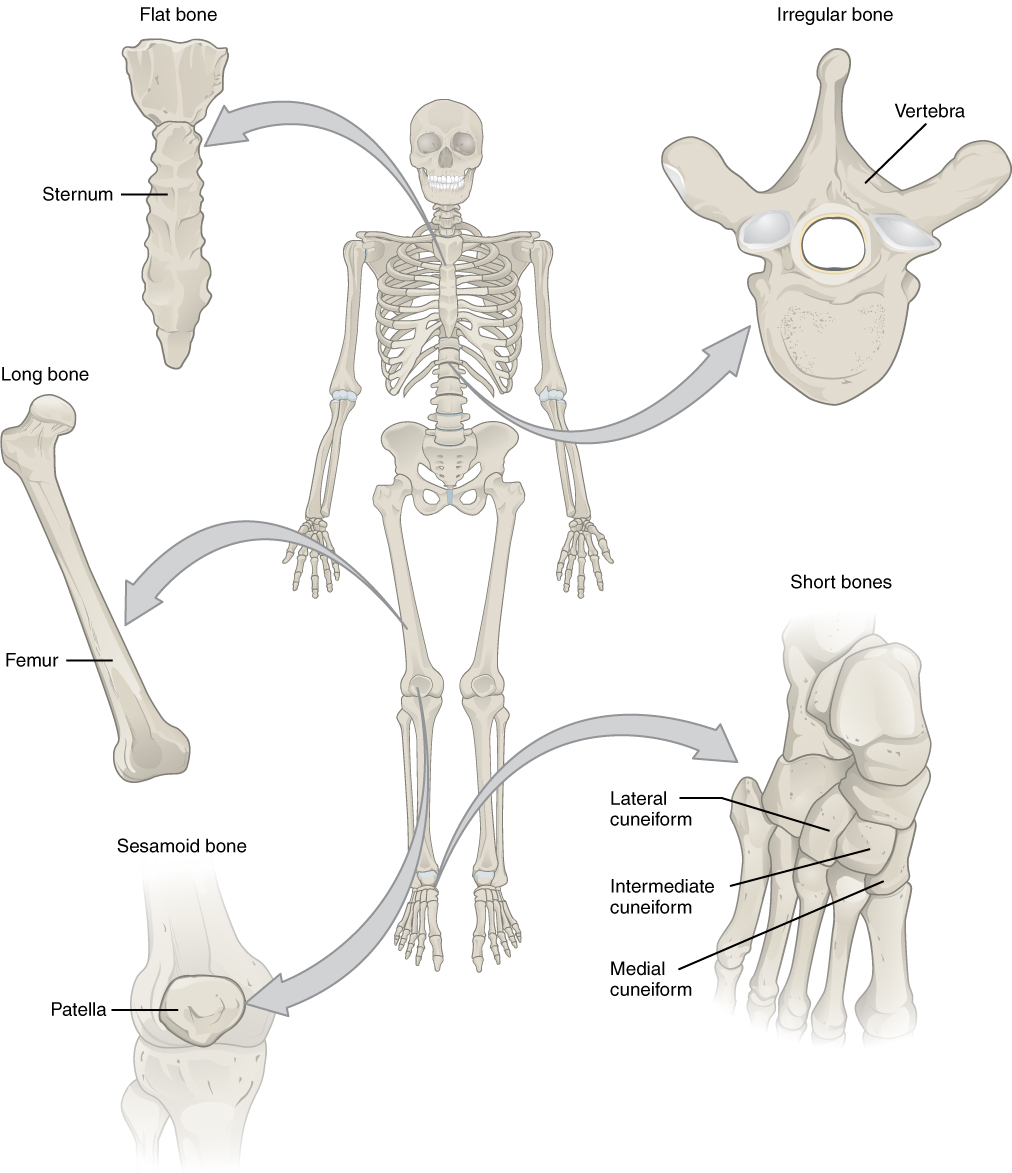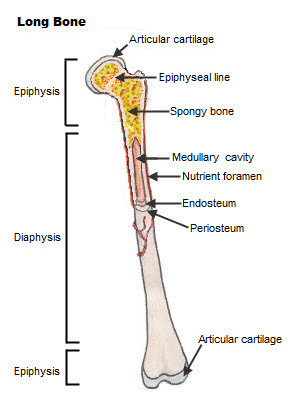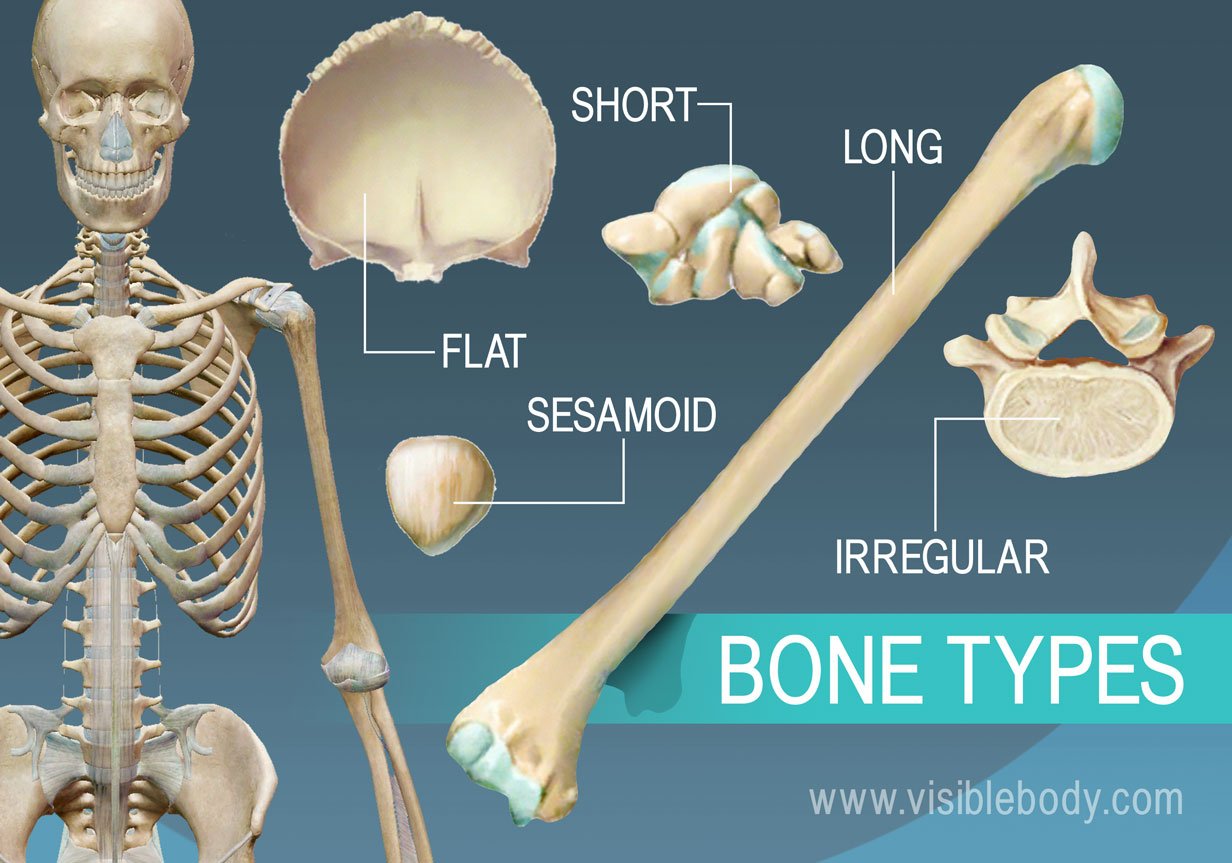Terms Used to Describe Shape of Bones
37 rows bones of the skull vertebral column ribs and sternum. Their shapes and their functions are related such that each categorical shape of.

Introduction To Bone Boundless Anatomy And Physiology
The term flat bone is somewhat of a misnomer because although a flat bone is.

. 5 rows Flat Bones. - concentric lamellae - circular shape. Spine of the sphenoid bone.
They consist of two outer layers of. Glossary of Spinal Terms. Long bones are so-called because they are longer than they are wide.
The shaft of a long bone is its diaphysis die-AFF-ih-sis and each end is called an epiphysis. If you were describing the shin bone the proximal end would be the end closest to the knee and the distal end would. 1 articulations 2 projections and 3 holes.
A process projection on one bone may fit with a depression on a second bone to form a joint. The 206 bones that compose the adult skeleton are divided into five categories based on their shapes. There are three general classes of bone markings.
Flat long short irregular and sesamoid. Anatomists name the skeletal muscles according to a number of criteria each of which describes the muscle in some way. Keep in mind.
Short bones include the bones of the wrist and ankle. Match the terms used to describe skeletal features with the appropriate description. Information Long bones.
Gaunt meanwhile is used to describe a very thin face sometimes a face that is thin. The spine or spinous process is a sharp slender projection of the bone which is useful for attachment of muscles or ligaments. Long bones in the arm.
They are only found in the hands and the feet. Generally speaking these bones protect support or carry. Bones are composed of an exterior layer of compact bone tissue that surrounds the internal spongy bone.
Someone who is scrawny is so thin that their bones stick out. They consist of two outer layers of compact bone and an inner layer of spongy bone. The skeleton of the arms and legs are made up of mostly long bones.
He was a scrawny little kid. 6 rows A long bone is one that is cylindrical in shape being longer than it is wide. The major bones of the.
Usually bones that are thin and curved. The axial skeleton forms the long axis of the body and includes the bones of the skull vertebral column and rib cage. Long bones have a tubular shaft and articular surface at each end.
Table 72 describes the bone markings which are illustrated in Figure 721. Long bones are found in the arms. One of the four basic bone shapes in the human skeleton.
Some examples of terms used to describe bones include the term foramen to describe a hole through which something passes and a canal or meatus to describe a tunnel-like structure. Most of the bones of the cranium are flat bones. A long bone is one that is cylindrical in shape being longer than it is wide.
Flat bones are thin flattened and usually curved. Relatively deep pit or depression. Keep in mind however that the term describes the shape of a bone not its size.
Allograft Bone ie donor bone Sterile bone derived from another human which is used for grafting procedures. Anterior The front. Types of Bone.
These terms are often used to describe the arms and legs. The surfaces of bones bear projections depressions ridges and various other features. Compact bone is made up of lamella layers that are named according to their shape or position within compact bone.
There are five types of bones in the skeleton.

Seer Training Classification Of Bones

Skeletal System Learn Skeletal Anatomy

Comments
Post a Comment